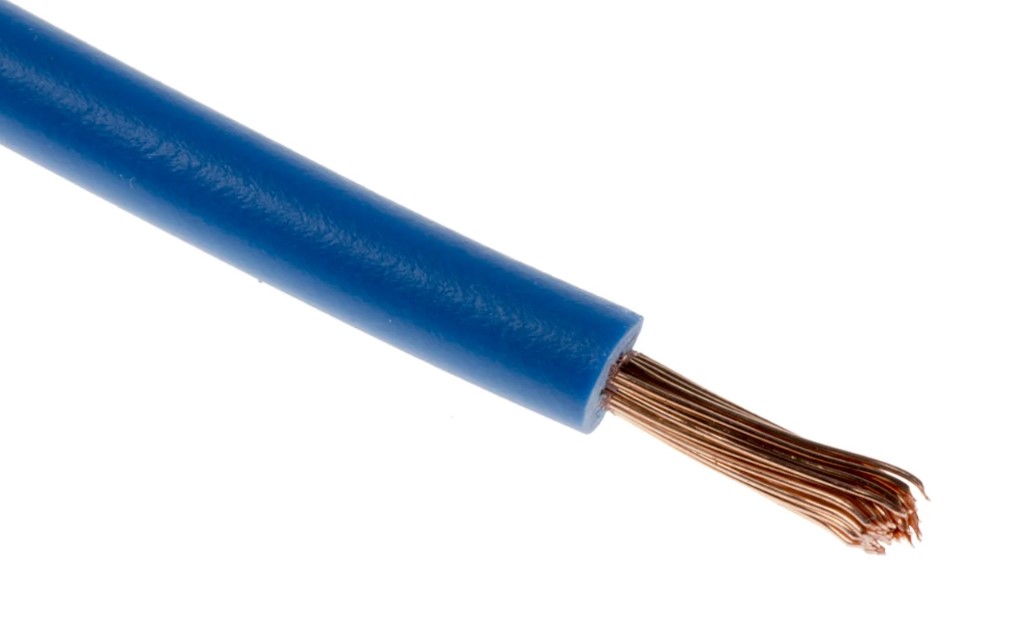AC/DC Power
Electrical conductor gauges
In this post, we will talk about an essential point, such as electrical conductor gauges, also known as «electrical gauges for conductor measurement.»
Electrical cables are essential elements in any electrical installation. To learn everything about them, we invite you to read Electrical cables and conductors: overview. There, you will discover the difference between electrical cables and conductors.
When designing an installation, the correct selection of the conductor is crucial for everything to function as expected. You will achieve this only by using the gauge system, which we will explain to you below. Let’s get started!
What is a conductor gauge?
For this term, there are 2 main definitions:
- It is an instrument used for the «measurement of conductors» in terms of their surface and diameter. Here is an example of this device.

- They are elements that provide information about the thickness, diameter, or cross-sectional area of conductors that are part of electrical cables. They may include other data such as electrical resistance, cable identification, and current capacity or ampacity.
Typically, they consist of manuals and descriptive tables. This article will focus on this specific type of gauge
A common point to consider is that the conductor tables for different gauges show the conductor sections as if they were solid.
In our article How to calculate the effective section of a conductor we will extensively discuss this topic, which, despite its importance, is not well known. Don’t forget to read it!
Types of gauges for conductor measurement
There are various classes of conductor gauges, although their characteristics are standardized worldwide. However, depending on the country or even the continent, they have different formats, and some are more widely used than others in cable identification.
It’s important to note that it does not depend on the material of the conductor, which can be copper, aluminum, etc. So, a gauge value is the same for all types of conductors. Here are the most commonly used ones.
MCM or CM Gauge (Mil Circular Mil or Circular Mil)
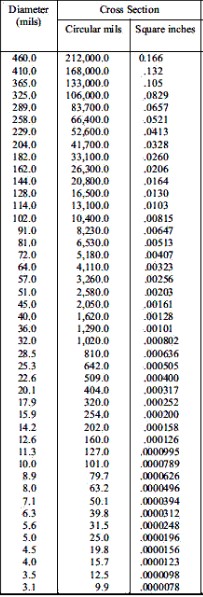
This gauge expresses the diameter of the conductor in a unit called «MIL,» which is equivalent to one-thousandth of an inch. Its surface is identified as «CM» or «MCM,» which stands for Circular Mil or Mil Circular Mil.
By definition, 1 CM is the area of a conductor with a diameter of 1 MIL. In the image above, we present a typical table for this gauge.
It’s important to note that its most common use is in large-gauge conductors for industrial and DC power applications. Examples include power cables for heavy AC and DC equipment and others.
Gauge AWG (American Wire Gauge)
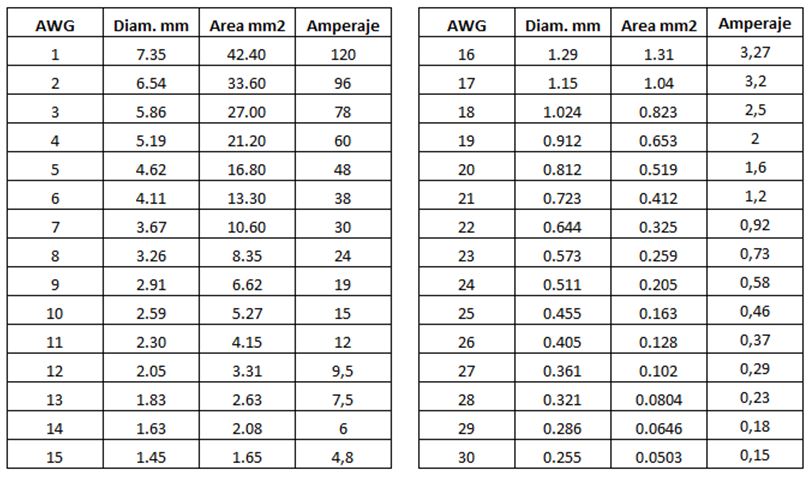
This is the most widely used table in the United States and in Central and South American countries. It defines the gauge of electrical conductors, especially those made of copper, and is used in a wide range of applications.
In this gauge, you can find very small-gauge cables used in telecommunications, as well as cables for residential and commercial use with moderate power consumption.
At the beginning of this subsection, we present a table for this gauge as an example.
Gauge SWG (Imperial Standard Wire Gauge)

It is primarily used in the United Kingdom and other European countries typically associated with it. It typically standardizes the gauge of different types of conductors manufactured in these regions. Above, we show you a commonly used table for this gauge.
Wire gauge equivalency tables
To facilitate interpretation across different countries among industry professionals, «equivalency tables» have been developed. These tables illustrate the equivalent notations of electrical wire gauges and common points between them.
Typically, these common points pertain to the area or section of conductors for cable identification. The image below illustrates what we mean.
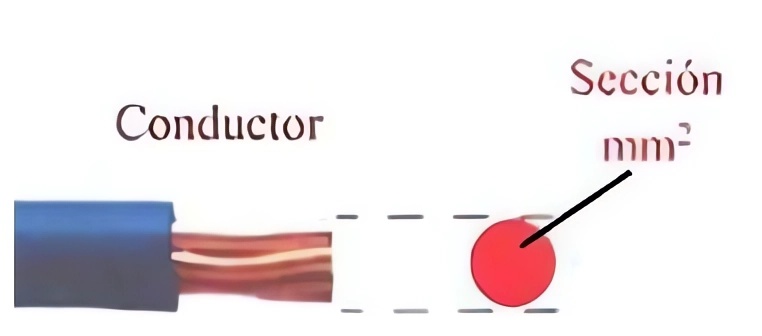
Here is an example of a table of equivalence for electrical gauges.
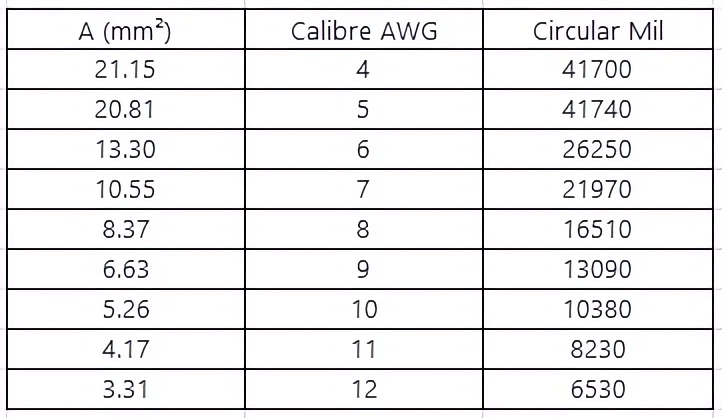
Up to this point
These are some of the most frequently used conductor gauge tables in different countries and applications. It is worth noting that there are other tables and specific regulations for certain areas, such as aerospace or railway applications.
Therefore, the choice of the system to use depends on the regulations of each country as well as the application. It is important to be able to interpret the information provided by these tables, in addition to the gauge.
Check out our course DC power systems sizing and design for telecommunications and critical systems. There, you will find an extensive explanation of the application of AWG and CM systems. Get it now! If you want to know its content, just click here.
In the energydcac blog, you will find interesting content on the fascinating topic of DC and solar energy. Don’t miss it!

